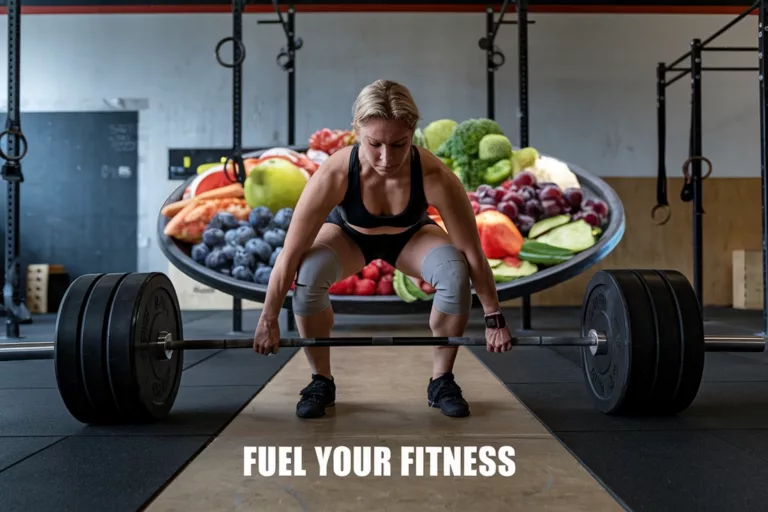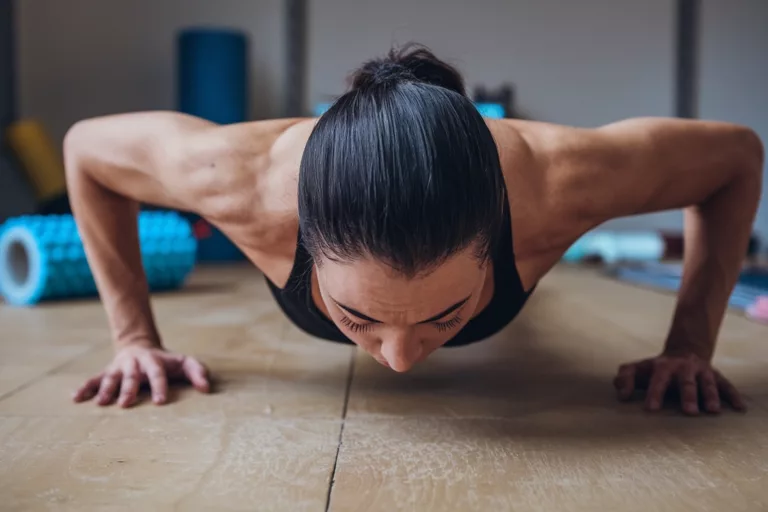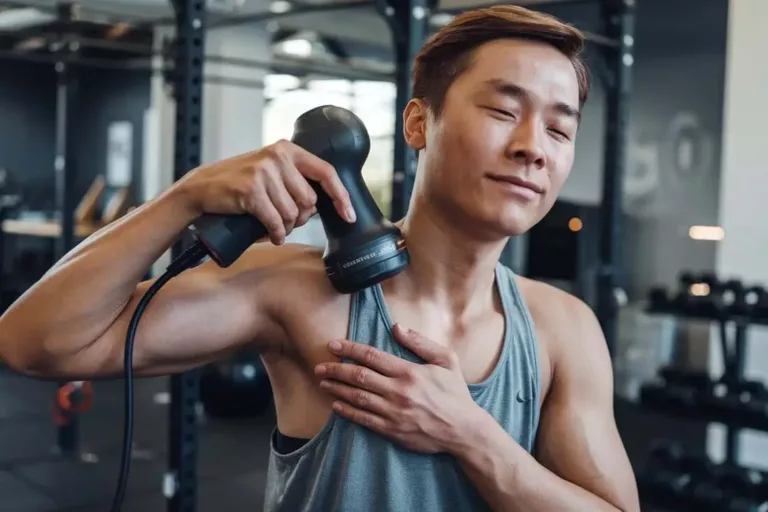Every athlete knows that pushing limits is key to reaching peak performance. But what happens when muscle soreness, stiffness, and fatigue hold you back?
For dedicated athletes, learning how to speed up muscle recovery is just as important as the workouts themselves.

Research shows a staggering 80% of athletes experience a performance-limiting injury during their training lifetime. The culprit?
Often, it’s not just the intensity of training but inadequate recovery. Muscle soreness, slow recovery times, and the ever-present risk of injury are roadblocks on the path to athletic success.
They lead to missed training days, compromised performance, and can even derail an entire season.
But what if there were tools that could help you recover faster, reduce soreness, and get you back in the game stronger than ever?
Enter the world of science-backed recovery tools – your secret weapon for unlocking peak performance and minimizing downtime.
The Science of Muscle Recovery
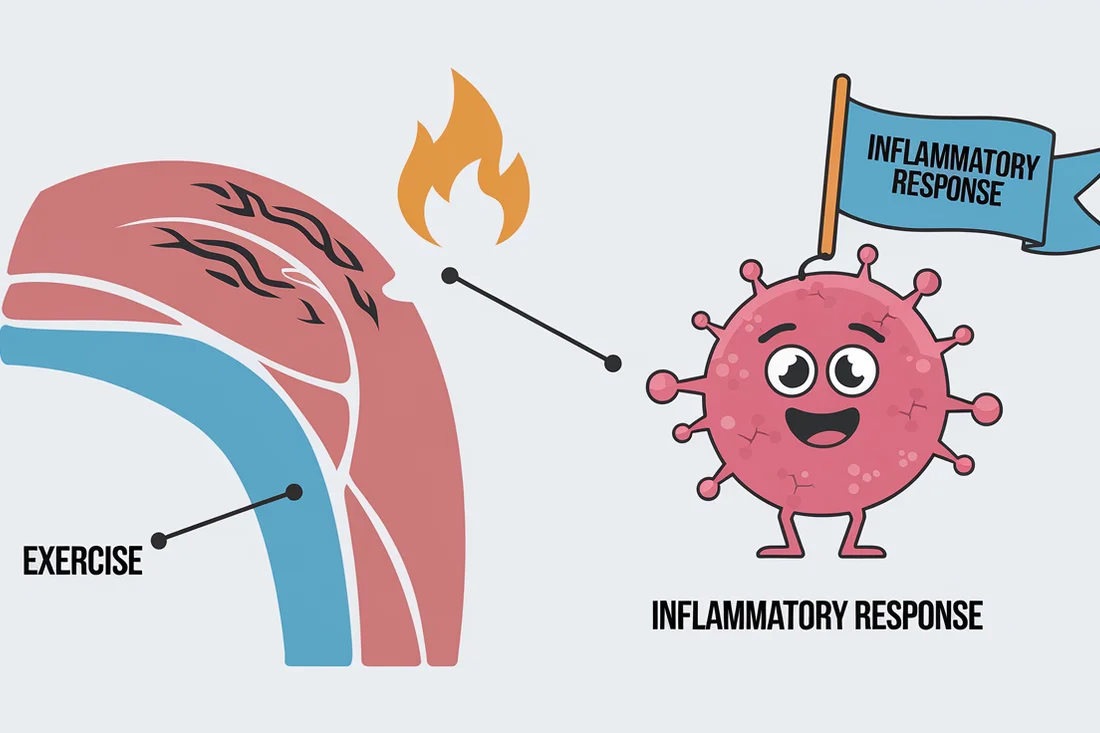
What Happens When You Train
Every time you push your body to its limits during a workout, you create microscopic tears in your muscle fibers.
This is a natural part of the training process and is essential for building strength and endurance.
The body responds to these micro-tears with an inflammatory response, increasing blood flow to the muscles to deliver nutrients for repair.
The Role of Effective Recovery
Proper recovery is crucial for promoting muscle protein synthesis, which is the process through which your body repairs and grows muscle tissue.
Effective recovery techniques help reduce inflammation, allowing muscles to repair more efficiently.
This not only helps in muscle growth but also optimizes tissue repair, making you stronger and more resilient for your next workout.
How the Right Tools Can Help
Recovery tools are designed to enhance the body’s natural healing processes. They work by:
- Enhancing Blood Flow: Tools like massage guns and compression boots increase circulation, delivering more oxygen and nutrients to the muscles while removing lactic acid and other metabolic waste.
- Reducing Lactic Acid Build-Up: Techniques such as cold therapy (ice baths or cryotherapy) help reduce lactic acid build-up, which can cause muscle soreness.
- Promoting Cellular Repair: By stimulating blood flow and reducing inflammation, recovery tools help promote cellular repair, leading to faster recovery and reduced muscle soreness.
Investing in the right recovery tools can significantly speed up muscle repair, allowing you to train harder, recover faster, and ultimately achieve your athletic goals more efficiently.
In the next sections, we’ll delve into the specific tools and their benefits, guiding you on how to incorporate them into your recovery routine effectively.
5 Science-Backed Tools for Athletes to Speed Up Muscle Repair
Tool 1: Massage Guns
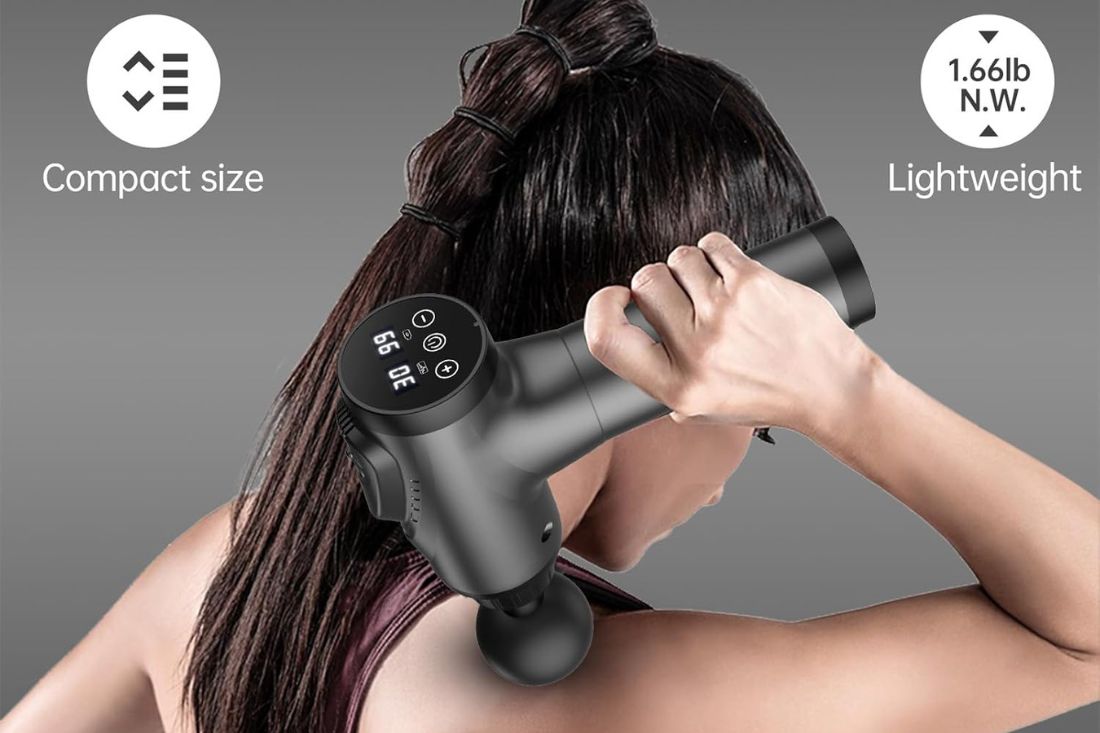
How it Works: Massage guns deliver rapid bursts of pressure, known as percussive therapy, deep into muscle tissue.
These vibrations help to release tension, reduce muscle stiffness, and improve blood flow to the treated area.
Benefits:
- Increased Blood Flow: Improved circulation delivers oxygen and nutrients to muscles while removing metabolic waste, which can speed up recovery.
- Reduced Muscle Soreness: Studies suggest that massage guns can effectively reduce delayed-onset muscle soreness (DOMS) after strenuous exercise (link to a relevant study).
- Improved Range of Motion: By releasing muscle tightness, massage guns can help athletes achieve a greater range of motion, which is essential for optimal performance.
- Breaking Up Scar Tissue: Regular use may help break down scar tissue and adhesions, restoring mobility and reducing the risk of future injuries.
Howatson, G., & van Someren, K. A. (2008). The prevention and treatment of exercise-induced muscle damage. Sports Medicine, 38(6), 483-503. Link
How to Use:
- Start by using the massage gun on a low setting and gradually increase the intensity as needed.
- Move the gun slowly over the muscle group you want to target, spending 1-2 minutes per area.
- Avoid bony areas and any areas of pain or inflammation.
- Consult the manufacturer’s instructions for specific guidance and recommended usage times.
Things to Consider:
- Price Range: Massage guns can vary significantly in price, so consider your budget.
- Portability: Some models are more compact and travel-friendly than others.
- Noise Level: Massage guns can be quite loud, so keep this in mind if you’re sensitive to noise.
- Contraindications: Avoid using a massage gun over areas of recent injury, inflammation, or if you have certain medical conditions (consult with your doctor or physical therapist if unsure).
Product Recommendations:
- Theragun Elite
- Hypervolt Go 2
- Renpho R3 Mini Massage Gun (budget-friendly option)
Discover the science and benefits of massage gun therapy in our comprehensive guide, “The Power Of Massage Gun Therapy For Muscle Pain Relief“.
Tool 2: Compression Boots
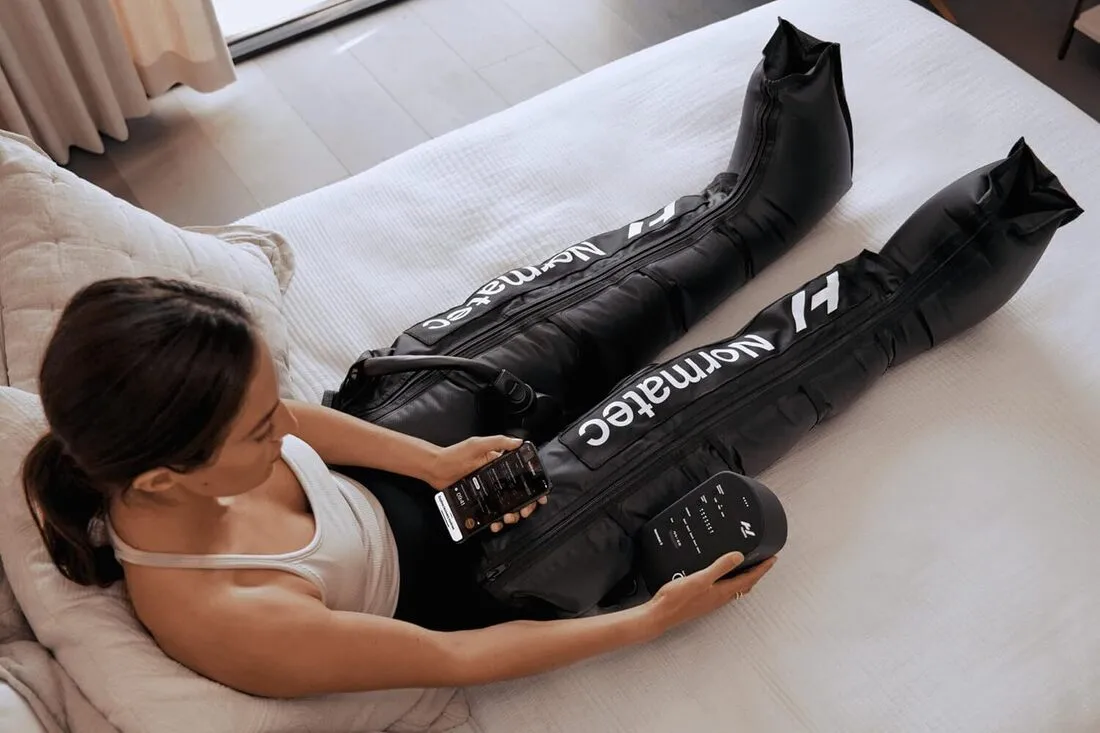
How it Works: Compression boots use pneumatic compression (air pressure) to mimic the body’s natural muscle pump.
They rhythmically inflate and deflate, squeezing and releasing your legs to enhance blood circulation and lymphatic drainage.
Benefits:
- Reduced Swelling and Inflammation: Compression helps reduce fluid build-up in the limbs, which can be especially beneficial after intense workouts or competitions.
- Faster Removal of Metabolic Waste: Enhanced circulation aids in flushing out metabolic byproducts like lactic acid, which contributes to muscle fatigue and soreness.
- Improved Recovery Time: By reducing inflammation and promoting circulation, compression therapy can help athletes recover more quickly between training sessions.
How to Use:
- Put the compression boots on your legs, ensuring a snug but comfortable fit.
- Select the desired pressure and duration settings (refer to the manufacturer’s instructions for guidance).
- Use after strenuous workouts, competitions, or long periods of travel to combat fatigue and swelling.
Things to Consider:
- Price: Compression boots can be a significant investment, especially for high-end models.
- Bulkiness: Compression boots are not the most compact recovery tool, which may make them less convenient for travel.
- Potential Discomfort: Some people find the squeezing sensation of compression therapy uncomfortable. Start with shorter durations and lower pressure settings to assess your tolerance.
Product Recommendations:
Discover the science and benefits of compression therapy in our comprehensive guide “Boost Circulation, Flush Out Fatigue: Compression Therapy Explained“
Tool 3: Foam Rollers

Unlock Tight Muscles & Improve Mobility: Your Guide to Foam Rolling
How it Works: Foam rolling is a form of self-myofascial release (SMR).
It involves applying pressure to your muscles using a foam roller to release knots, tension, and adhesions in the fascia (the connective tissue that surrounds muscles).
Benefits:
- Increased Flexibility: Regular foam rolling can improve flexibility and range of motion by releasing muscle tightness.
- Improved Range of Motion: Greater flexibility translates to a better range of motion, which is essential for efficient movement patterns and injury prevention.
- Reduced Muscle Soreness: Foam rolling can help alleviate muscle soreness by increasing blood flow and breaking up adhesions in the fascia.
- Injury Prevention: By addressing muscle imbalances and improving flexibility, foam rolling can play a role in preventing future injuries.
Cheatham, S. W., Kolber, M. J., Cain, M., & Lee, M. (2015). The effects of self-myofascial release using a foam roll or roller massager on joint range of motion, muscle recovery, and performance: a systematic review. International journal of sports physical therapy, 10(6), 827. Link
How to Use:
- Place the foam roller under the muscle group you want to target.
- Use your body weight to apply gentle pressure, rolling slowly back and forth over the muscle.
- Focus on areas that feel tight or tender, spending 30-60 seconds on each area.
- Avoid rolling directly over joints or bones.
Things to Consider:
- Density and Texture: Foam rollers come in various densities (soft, medium, hard) and textures (smooth, textured). Start with a softer roller if you’re new to foam rolling or have sensitive muscles.
- Affordability: Foam rollers are a relatively inexpensive recovery tool, making them accessible to a wide range of athletes.
- Technique: Proper technique is essential for effective and safe foam rolling. Consider consulting with a physical therapist or certified trainer for guidance.
Product Recommendations:
- TriggerPoint GRID Foam Roller (various sizes and densities)
- LuxFit High-Density Foam Roller (budget-friendly option)
Discover the science and benefits of foam rolling therapy in our comprehensive guide “Foam Rolling Masterclass To Boost Mobility And Relieve Tightness“
Tool 4: Cold Therapy Units
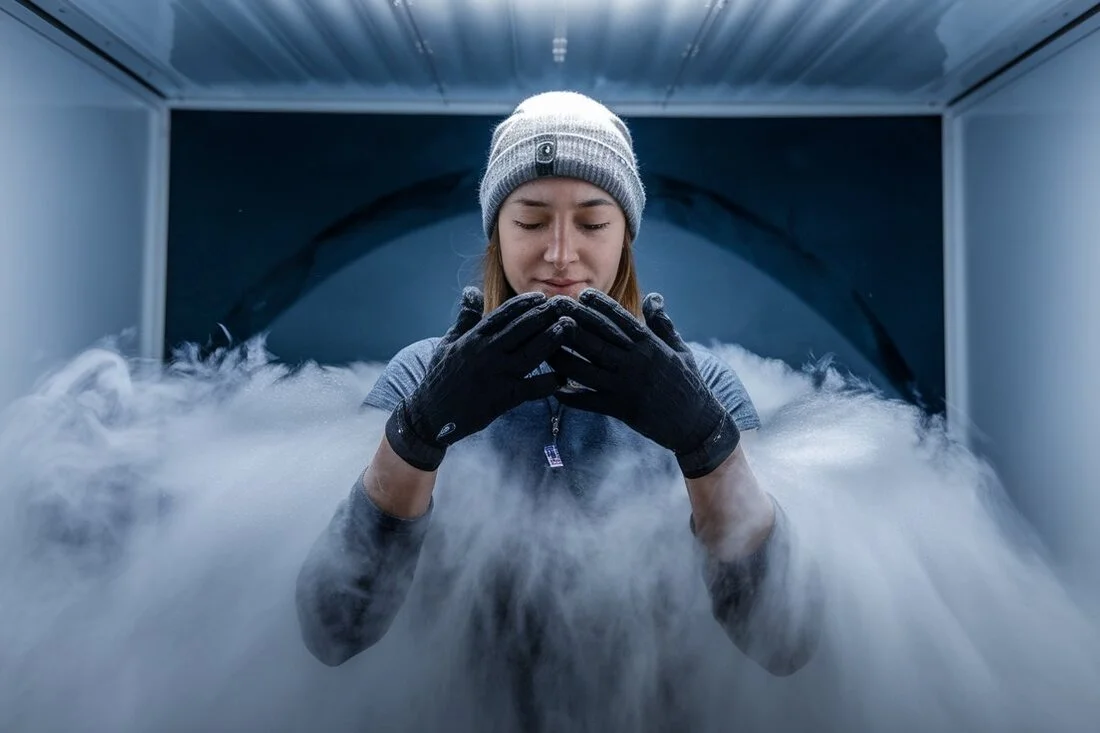
Chill Out Inflammation: The Benefits of Cold Therapy
How it Works: Cold therapy relies on the principle of vasoconstriction. When you apply cold to your body, it causes blood vessels to constrict, reducing blood flow to the area.
This helps to minimize swelling, inflammation, and pain.
Benefits:
- Pain Relief: Cold therapy is particularly effective at reducing pain, especially acute pain from injuries.
- Reduced Swelling: Vasoconstriction helps limit fluid build-up in tissues, minimizing swelling after injury or strenuous exercise.
- Beneficial for Acute Injuries: Cold therapy is often recommended as part of the RICE (rest, ice, compression, elevation) protocol for acute injuries.
Versey, N. G., Halson, S. L., & Dawson, B. T. (2013). Water immersion recovery for athletic performance: a review. Sports Medicine, 43(9), 1101-1130. Link
How to Use:
- Ice Baths: Fill a bathtub with cold water and add ice to reach a temperature of 50-59°F (10-15°C). Submerge yourself for 10-15 minutes.
- Ice Packs: Apply ice packs wrapped in a thin towel to the affected area for 15-20 minutes at a time, with breaks between applications to prevent skin irritation.
- Cryotherapy Chambers: Cryotherapy involves exposing your body to extremely cold air (below -100°C) for a short period (2-4 minutes). This is a more advanced form of cold therapy typically offered at specialized facilities.
Things to Consider:
- Availability: Ice baths and ice packs are easily accessible, while cryotherapy chambers are less common and more expensive.
- Discomfort: Cold therapy can be uncomfortable, especially initially. Start with shorter durations and gradually increase exposure time as tolerated.
- Safety: Avoid prolonged exposure to extreme cold, as it can damage skin and tissue. Consult with a healthcare professional before trying cryotherapy or if you have any underlying medical conditions.
Product Recommendations:
- Arctic Ice Tundra Cooler – A high-quality cooler can double as an ice bath.
- Coolzone Cryo Cuff – combines ice and compression for targeted cold therapy, ideal for knees, shoulders, or other joints.
Discover the science and benefits of hot and cold therapy in our comprehensive guide “Unlock The Benefits Of Hot And Cold Therapy To Chill Out Inflammation And Boost Recovery“
Tool 5: Percussion Massagers (Handheld)
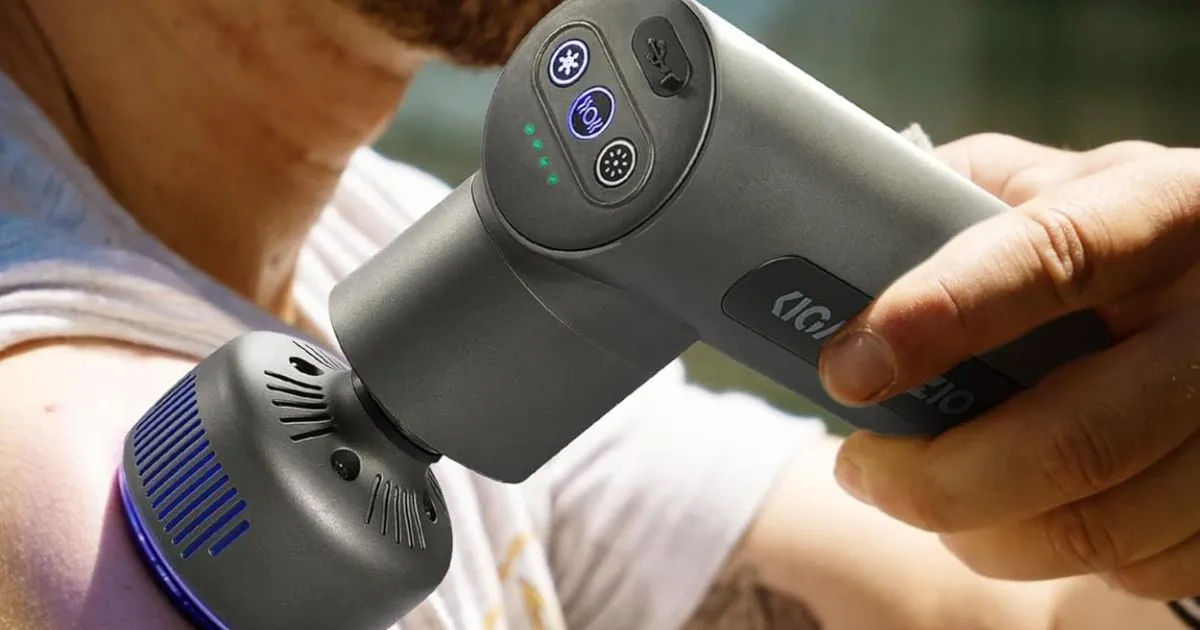
Portable Power: Percussion Massage for On-the-Go Relief
How it Works: Handheld percussion massagers use similar principles to massage guns but on a smaller, more portable scale. They deliver targeted vibrations to muscles, promoting blood flow and releasing tension.
Benefits:
- Convenience and Portability: Their compact size makes them easy to carry in a gym bag or travel with.
- Affordability: Handheld percussion massagers are typically more affordable than full-size massage guns.
- Targeted Relief: Their smaller size allows for precise targeting of specific muscle knots or trigger points.
How to Use:
- Choose a massage head attachment appropriate for the muscle group you want to target.
- Turn on the device and apply gentle pressure to the muscle, moving it slowly back and forth or in circular motions.
- Start with a lower intensity setting and gradually increase as needed.
Things to Consider:
- Less Powerful: Handheld percussion massagers are generally less powerful than larger massage guns, which may make them less effective for deep tissue massage or treating larger muscle groups.
- Battery Life: Pay attention to battery life when choosing a model, especially if you plan to use it frequently or for longer durations.
Product Recommendations:
Discover the science and benefits of portable percussion massage therapy in our comprehensive guide “Discover Portable Percussion Massage For Powerful Relief Anywhere“
This detailed breakdown of the 5 science-backed recovery tools gives your readers a comprehensive understanding of each option, its benefits, drawbacks, and how to use it effectively.
It empowers athletes to make informed choices about the best tools to integrate into their recovery routines for optimal performance and well-being.
Case Studies / Testimonials / Examples of Real Stories of Recovery Success
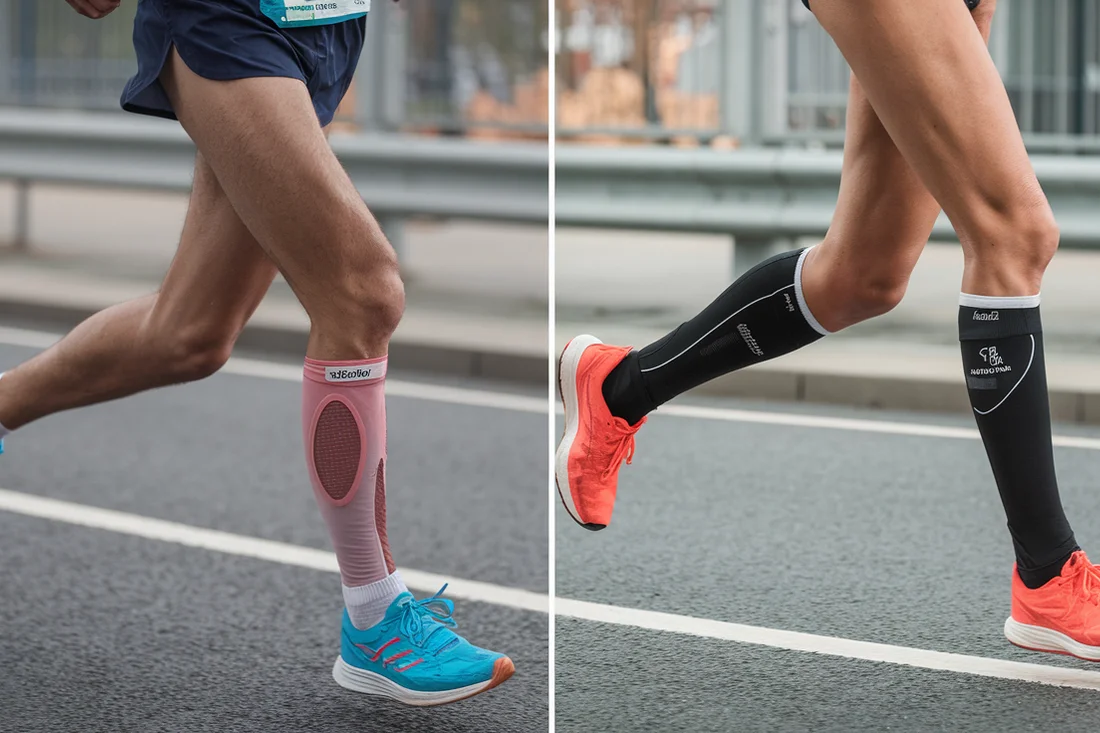
To further illustrate the power of these science-backed recovery tools, let’s take a look at how some athletes have leveraged them to enhance their performance and well-being.
Marathon Runner Recovers Faster with Compression Boots
Sarah, a dedicated marathon runner, found herself struggling with persistent muscle soreness and fatigue as she ramped up her training mileage. “I was hitting wall after wall, and my recovery time between long runs just wasn’t where it needed to be,” she recalls.
That’s when Sarah decided to invest in a pair of pneumatic compression boots. She started using them for 30 minutes after each long run and high-intensity workout. “The difference was night and day,” she says. “The compression helped flush out lactic acid and reduce swelling in my legs, allowing me to recover much more quickly. I was able to maintain a higher training load without the debilitating soreness.”
Sarah’s consistent use of the compression boots paid off on race day. She shaved nearly 10 minutes off her personal best marathon time, crediting the improved recovery for her ability to push harder in training and stay injury-free.
Weightlifter Sees Mobility Gains with Massage Gun Therapy
As a competitive weightlifter, Alex struggled with chronic tightness in his shoulders and lower back, which limited his range of motion and squat depth. “I was hitting a plateau in my lifts, and I knew I needed to address the mobility issues,” he explains.
Alex incorporated a massage gun into his post-workout routine, targeting the tight areas before and after training sessions. “The percussive therapy from the massage gun helped break up the muscle knots and adhesions that were holding me back. I noticed an immediate improvement in my flexibility and the depth of my squats.”
Within a few weeks, Alex regained the mobility he had been lacking, allowing him to lift heavier weights with proper form. “The massage gun was a game-changer. It not only helped me recover faster but also enabled me to train more efficiently and effectively. I wish I had started using it sooner!”
These real-life examples demonstrate the tangible benefits athletes can experience by incorporating science-backed recovery tools into their training routines.
Whether you’re looking to reduce soreness, improve mobility, or enhance overall performance, these tools offer a proven path to faster, more effective muscle repair.
Choosing the Right Tools for You: A Personalized Approach
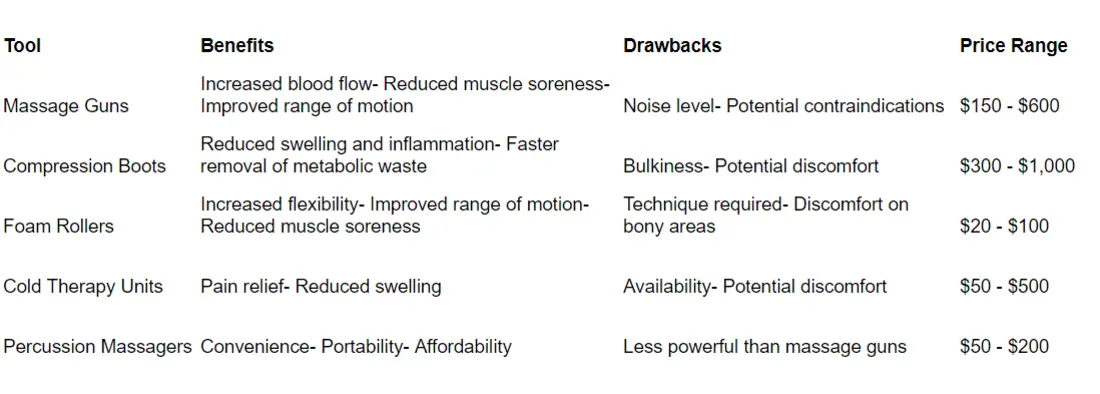
There’s no one-size-fits-all approach to recovery. The best tools for you will depend on your individual needs, training style, and budget.
Here’s how to choose the right tools for your athletic journey:
Assess Your Needs and Goals
- What are your primary recovery challenges? Are you struggling with muscle soreness, stiffness, inflammation, or a specific injury? Identifying your biggest pain points will help you prioritize tools that address those issues.
- What is your budget for recovery tools? Foam rollers and massage balls are relatively inexpensive, while massage guns and compression boots can be more costly.
- Do you need portability for traveling to competitions or the gym? If you’re on the go frequently, handheld percussion massagers or smaller foam rollers may be more practical than bulky compression boots.
Start with the Basics
Don’t feel the need to jump into expensive tools right away.
Start with affordable and versatile options like foam rollers and massage balls.
These can provide significant benefits for muscle recovery, flexibility, and pain relief.
Consult with Professionals
For specific injuries or if you’re unsure about using recovery tools, it’s always best to consult with a healthcare professional.
A physical therapist or athletic trainer can provide personalized guidance on the best tools for your situation and how to use them safely and effectively.
Example Questions to Help You Decide
- Are you a runner who experiences tight hamstrings and IT bands? A foam roller and a massage gun can be great for targeting those areas.
- Do you struggle with ankle swelling after long workouts or races? Compression boots could be a valuable addition to your recovery routine.
- Do you travel frequently for competitions? Consider a handheld percussion massager or a compact foam roller for on-the-go relief.
Remember, recovery is an ongoing process, and it’s okay to experiment with different tools to find what works best for you.
FAQs – Addressing Common Questions About Recovery Tools

Here are some frequently asked questions about the safety, usage, and effectiveness of the recovery tools discussed:
Q1: Are these tools safe for everyone to use?
While the recovery tools mentioned are generally safe, there are important contraindications and cautions to consider:
- Foam Rolling:
- Avoid using foam rollers on open wounds, recent injuries, or areas with active inflammation. Consensus among experts indicates that foam rolling is contraindicated for open wounds and may be cautioned for certain medical conditions.
- Consult with a healthcare professional or physical therapist if you have any underlying medical conditions or concerns.
- Massage Guns:
- Do not use massage guns on injured or inflamed connective tissue, as it can further damage the structure and increase inflammation. Avoid using the device over nerves, blood vessels, lymph nodes, bursae, organs, tendons, or ligaments, as improper placement can cause severe damage.
- Contraindications include fractures, deep vein thrombosis, and rhabdomyolysis. Never use a massage gun on a fracture site or if you suspect a blood clot.
- Compression Boots:
- Generally safe for most users, but individuals with certain medical conditions (e.g., poor circulation, recent surgeries) should consult their healthcare provider before use.
- Ensure proper fit and follow manufacturer guidelines to avoid discomfort or complications.
- Cold Therapy:
- Avoid cold therapy on open wounds, frostbite, or areas with poor circulation. Be cautious with cold therapy if you have certain medical conditions like Raynaud’s disease or neuropathy.
- Follow safety guidelines to prevent overexposure and potential tissue damage.
- Handheld Percussion Massagers:
- Similar cautions as massage guns; avoid using on injured or inflamed areas, nerves, blood vessels, and other sensitive structures.
Q2: How often should I use these tools?
The frequency of using recovery tools depends on your training intensity and individual needs:
- Foam Rolling:
- Use 2-3 times a week for maintenance and as needed after intense workouts. Spend about 5-10 minutes per session targeting specific muscle groups.
- For athletes with high training volumes, daily foam rolling may be beneficial, but ensure you’re not overdoing it to avoid muscle fatigue.
- Massage Guns:
- Use 2-3 times a week, focusing on different muscle groups each time. Sessions can last 5-15 minutes, depending on the area being treated.
- For intense training periods, you might use a massage gun more frequently (e.g., every other day), but be cautious not to overuse it.
- Compression Boots:
- Use post-workout or after long periods of inactivity (like travel). Sessions typically last 15-30 minutes.
- For athletes with high training loads, using compression boots 2-3 times a week can be beneficial.
- Cold Therapy:
- Use immediately after intense workouts or when experiencing acute inflammation. Limit sessions to 10-20 minutes, with breaks between applications to avoid tissue damage.
- For chronic conditions, consult with a healthcare professional for a personalized plan.
- Handheld Percussion Massagers:
- Similar to massage guns; use 2-3 times a week, with shorter sessions (5-10 minutes) due to their less intense nature.
Q3: Can I use multiple tools in one recovery session?
Yes, you can use multiple tools in one recovery session, but it’s important to do so effectively:
- Combining Tools:
- For example, you could use a foam roller to warm up your muscles before switching to a massage gun for deeper tissue work.
- After a workout, use compression boots followed by a cold therapy session to reduce inflammation and enhance recovery.
- Handheld percussion massagers can be used as a quick follow-up to other tools or as a standalone tool for targeted relief.
- Sequence Matters:
- Typically, start with tools that promote blood flow and muscle relaxation (e.g., foam rolling, massage guns) before moving to tools that reduce inflammation (e.g., cold therapy).
- End your session with tools that aid in long-term recovery, such as compression boots.
Q4: What should I do if I feel pain while using a recovery tool?
If you experience pain while using any recovery tool, it’s crucial to listen to your body:
- Stop Immediately:
- If you feel sharp pain or discomfort, stop using the tool right away.
- Evaluate the area to ensure there is no injury or exacerbation of an existing condition.
- Adjust Technique:
- Check if the pain is due to improper technique or tool placement. Adjust your approach according to the manufacturer’s guidelines or seek advice from a healthcare professional.
- For tools like massage guns and handheld percussion massagers, reduce the intensity or avoid sensitive areas altogether.
- Consult a Professional:
- If the pain persists or worsens, consult with a physical therapist, athletic trainer, or healthcare provider to assess the situation and provide guidance on safe usage.
By being mindful of these guidelines, you can safely and effectively incorporate recovery tools into your routine, enhancing your overall recovery and athletic performance.
Conclusion – Empowering Your Recovery Journey
As we conclude this comprehensive guide on the 5 science-backed recovery tools for athletes, it’s essential to recap the significant benefits these tools can offer and empower you to take the next step in optimizing your recovery.
Recap the Benefits
Prioritizing muscle recovery with these science-backed tools can have a profound impact on your athletic career:
- Faster Muscle Repair: Tools like massage guns, compression boots, and foam rollers enhance blood flow, reduce lactic acid build-up, and promote cellular repair, leading to faster recovery times.
- Reduced Soreness: Techniques such as cold therapy, foam rolling, and percussive therapy have been shown to reduce muscle soreness and inflammation, making it easier to maintain a consistent training schedule.
- Improved Performance: By reducing muscle fatigue and improving flexibility, these tools enable athletes to train harder and more frequently, leading to enhanced performance and better overall results.
- Longer Athletic Career: Effective recovery is crucial for preventing injuries and extending the lifespan of an athletic career. These tools help mitigate the wear and tear on muscles, allowing athletes to perform at high levels for longer periods.
Empower Readers
Recovery is not a luxury, it’s an investment in your athletic future.
These science-backed tools give you the power to optimize your body for peak performance.
By incorporating these tools into your routine, you’re taking proactive steps to ensure you can continue pushing your limits without compromising your health or performance.
Call to Action
Now that you’re equipped with the knowledge of how these recovery tools can transform your training and recovery, it’s time to take action:
- Invest in a Tool: Choose a recovery tool that aligns with your needs and budget. Whether it’s a foam roller, massage gun, or compression boots, the right tool can make a significant difference in your recovery journey.
- Share Your Experience: We’d love to hear about your recovery journey. Share your experiences, tips, and any successes you’ve had with these tools in the comments below. This community support can be invaluable for others looking to enhance their recovery.
By committing to recovery and using these science-backed tools, you’re not just recovering from your workouts—you’re preparing your body for the next challenge.
Remember, recovery is where the real progress happens, and with the right tools, you can achieve more than you ever thought possible.
Start Recovering Like a Pro Today
Credible Citations
Dupuy, O., Douzi, W., Theurot, D., Bosquet, L., & Dugué, B. (2018). An evidence-based approach for choosing post-exercise recovery techniques to reduce markers of muscle damage, soreness, fatigue, and inflammation: a systematic review with meta-analysis. Frontiers in physiology, 9, 403. Link

